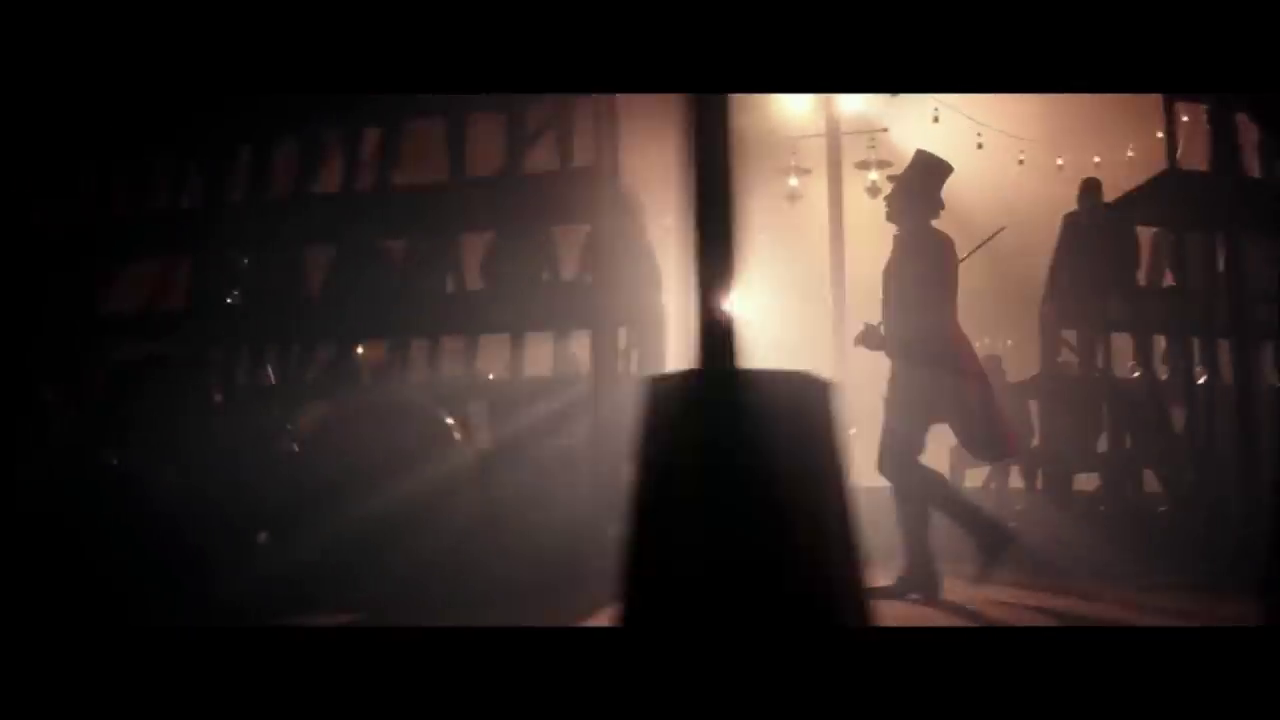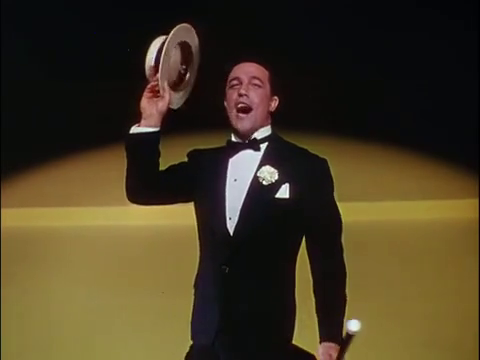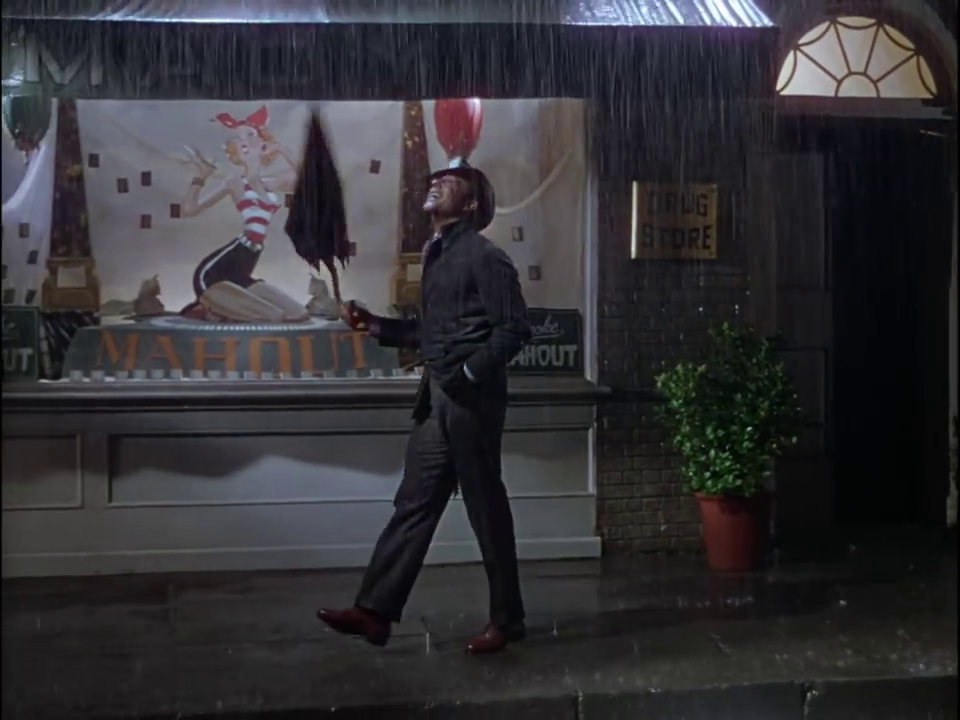Statement of Purpose
ISSN 2641-3671
Submission Guidelines
Permissions Please NO copyrighted material, unless you have a proof of permission to reproduce that copyrighted material (emails, invoices accompanied by terms), or can prove that this material is “public domain” or passes the four factor test for Fair Use.
Written Submissions
- All papers must be submitted electronically – cinemedia@sfsu.edu.
- No more than one submission per person per issue.
- All submissions must consist of previously unpublished and original material (papers written for classes are acceptable).
- All submissions must include an abstract, approximately 100 words in length.
- All submissions must be submitted in English All paper submissions should be between 2,000 and 5,000 words MLA Format.
Video Submissions
- Suggested Length: up to 10 minutes with credits.
- Please include a short description of your work (100 words maximum).
- Please send a link with you film (youtube or vimeo) and a short abstract to cinemedia@sfsu.edu. If the link is protected, please send us a preview password.
- Technical specifications – please check the vimeo guidelines for video submissions: https://vimeo.com/help/compression. We are looking for the same specs.
Still Image Submissions
- We support a variety of formats, but .png is generally preferred.
- Please include a short description of your work (100 words maximum).
- Please send your images with a short abstract to cinemedia@sfsu.edu.
- Technical specifications: please check information below to choose the appropriate resolution. This is the minimum resolution for full-size/half-size or quarter-size images. FULL PAGE: 2055 x 2882 pixels (174x 244 mm @ 300dpi) HALF PAGE: 1441 x 2055 pixels (122 x 174 mm @ 300dpi) QUARTER PAGE: 1031 x 1441 pixels (87.25 x 122 mm @ 300dpi)
Audio Submissions
- Audio submissions can include a narration, interviews, multidisciplinary sound art
- Length, Size and Format: each file must be no longer than 3 minutes. Each file must be no larger than 50 MB. All submissions should be in MP3 format.
- Please provide a short description of your work (100 words maximum).
- Please send your audio submissions and a short abstract via email to cinemedia@sfsu.edu.
- Technical specifications: – All submissions must be consistent in overall sound and formatting. – All files must be the same channel format (All mono or all stereo files). Recommended tech specs: Each file must be 192kbps 44.1kHz MP3 (or higher) with Constant Bit Rate (CBR).
Editorial Team
Luis M. Arango, Ashkan Forouhi, Behrang Garakani, Birdy Wei-ting Hong, Ryan McCandless, Max Oginz, Devin Reese, Amanda Robusti, Mitra Salmassi, Alec Smith, John Xuan Vu
Ex officio: Paloma Bennett, Allison Burris, Kristin Tripp Caldwell, Cady Conaway, Jessica Deleon, Jorge Delgadillo, Ailish Elzy, Hector Franco, Sreang Hok, James Huffman, Jordon Jacobson, Melda Kocabal, Pavel Koshukov, David Mai, Raphael Mallari, Chase Menaker, Kirk Mudle, Michelle Munyer, Anthonia Onyejekwe, Adán Gama Puffelis, Alba Roland, Jessica Schlegel, Mychal Shanks, Natalya Sharapova, Catalin Stef, Travis Svensson, Ellen Vanderlip, Gabrielle Vasso, John Xuan Vu, Brianna Werder, Andrew White, Kyle Wilhite, Madison Wise, Manyu Yang, YuHui Yang, R. L. Rutsky (Faculty Advisor)
Issue #2 Editorial Team Instagram Gallery
Image conception and cinematography by Alba Roland
Issue #5.5: All the Colors of the Affect
This issue is the culmination of video essays presented by a panel, titled All the Colors of the Affect: The Audiovisual in (Neo-)Giallo, which consisted of Ashkan Forouhi, Aaron Kerner, Birdy Hong, and David Mai (chaired by David Mai) at the 2022 Society for Cinema and Media Studies Annual Conference. The panel explored (neo-)giallo aesthetics and its influence in transnational cinemas and the affective experience. The panelists looked at audiovisual elements found in giallo films, and the genre’s “vivid expressionistic colour schemes, psychedelic soundtracks, and an approach to violence that is deeply visceral and tactile,” as Lindsay Hallam states. Panelists explored genres and films outside of giallo, but that clearly take inspiration from giallo’s aesthetic treatment of mise-en-scène, sound design, and editing. Panelists considered the audiovisual strategies that elicit an affective experience or stimulate the sensorial. From characteristic close-ups (especially of eyes), to the movement of cameras that obscure and reveal bodies, to the flow of editing and movement in bodies, such stylistic strategies are considered central to the giallo’s ability to communicate to the viewing body. As the language track is an auditory element of the film, this too begged for a closer examination by comparing the original giallo soundtracks to the English dubs to reveal the differences in the affective experiences through an auditory perspective. How has giallo played in cinematic cultures—from its influence on American slasher films, to its illicit circulation in Taiwan, to its re-emergence in European “arthouse” cinema? In what ways has the genealogy of giallo films evolved, whereby giallo influenced other genres and filmmakers, and by what means has giallo made a mark on contemporary filmmaking cultures that emphasize aesthetics and affect?
Contents #5.5
The Experience of the Beautiful in Luca Guadagnino’s 2018 Suspiria — a video essay by Aaron Kerner
In What Tongue Do Gialli Speak? Dubbing, Language and the Affective Experience in Giallo — a video essay by Ashkan Forouhi
All the Colors of Lady Avengers: Giallo, Pinku Eiga and “Taiwan Pulp Films” — a video essay by Birdy Wei-ting Hung
Anime Affect: Neo-Giallo Aesthetics of Masaaki Yuasa — a video essay by David Mai
Issue #5: Connections, Proximities, Mediations
Topic: Connections, Proximities, Mediations
Submission Deadline: April 23, 2021
For Submission Details, see: https://cinemedia.media/submitguide/
Send Submissions (or Queries) to: cinemedia@sfsu.edu
The pandemic has highlighted issues of proximity and distancing, connection and disconnection. From classes to political demonstrations, anniversaries to viewing parties, connections are now increasingly mediated. Yet, connection, proximity, and mediation have long been central to thinking about media, technology, social and political relations, and notions of identity.
This call for submissions seeks work that explores how figurations of connection and diffusion, proximity and remoteness, are deployed in contemporary media, and how those figurations might be rethought in more complex, less binary terms. To what extent should these media networks and connections be seen as spatial, and where are those spaces located? If media connectivity can be mapped, how might those connections be rerouted, détourned, jammed, or regenerated? Is connectivity better figured in terms of relationality, intersectionality or “the local”? Or should media be seen more as a matter of “dispersion” or “drift” than connection?
On the other hand, media and connectivity need not be seen only in spatial terms. Media have often been linked to temporality and memory, and thus are arguably never fully present, but spectral and out of joint. How should we imagine the proxemics of mediatic specters, the tangled but evocative networks of memory, as well as our connections to the ghostly, repressed bodies of history that inevitably haunt the present? What forms are most appropriate to present the return of these historically oppressed/repressed peoples, cultures and memories?
In what instances should connectivity or sharing be considered oppressive? Does connectivity demand a corresponding “right to opacity,” to escape classification, to remain masked?
cinemedia invites essays, films, video and interactive essays, or other media forms that examine, critique, or simply explore the questions above or any other issues related to the concepts of Connections, Proximities, and Mediations.
Topics may include:
- The Politics of [Over-]Sharing
- Coded bias, Race, Identity
- Social media and Misinformation
- Facial Recognition, Data Mining, Panoptics, Surveillance
- Memory, Digital Cinema, Nostalgia
- Space, Distance and Connection in Media
- Biopolitics in the Digital Age
- Hauntology and Media
- Online Personas and Representations
Contents #5
3rd Party — 3 x 3 brief essays on stopping by Max Oginz
An Aesthetic of Anxiety (Meek’s Cutoff and Neo-neorealism in the Wake of Financial Crisis) — an essay by Kevin Thomas McKenna
All the Colors of Lady Avengers — a visual essay by Birdy Wei-ting Hung
Before I Let Go: How Black Vloggers Imagine Black Futures for Their Children — an essay by LaRisa Anderson
e-Public Sphere — a visual essay by Alec Smith
Heart Whispers — a film by Ash Verwiel
Hong Kong’s Battle on Screen: Taking Back The Legislature 佔領立法會 (2020) and Inside The Red Brick Wall 理大圍城 (2020) — an essay by Zhang Yuqi
I Am Ready _ — an experimental interactive project by Behrang Garakani
Jon Bois, and the Aesthetics and Potentialities of Posthuman Documentaries — a video essay by Ryan McCandless
Marker’s Time Machine — a visual essay by M. Salmassi
Misleading Proximity and Audiovisual (Un)Balance in Roma — an essay by Felipe González-Silva
Nomenclature 27b/6 — an interactive essay by John Vu
The Otaku Database — a database essay by Devin Reese
The Overtones in Film — a video essay by Miguel Bennu
Tarots of History — a visual essay by Amanda Robusti
Issue #4: The Allure of the Image
Submission Deadline: April 24, 2020
For Submission Details, see: https://cinemedia.media/allure-cfs/
Send Submissions (or a Description) to: cinemedia@sfsu.edu
Images, whether static or moving, have often been seen as alluring for viewers, evincing a power to attract and fascinate. Cinema, photography, and other image-based media depend on ideas of allure to draw us to certain films, to certain stars, to moments or images that somehow capture our attention. Allure overlaps with notions of visual attraction, with startling or haunting imagery, with an eroticism that is often as much visceral as visual. Yet, at the same time, allure never seems entirely separate from the idea of the lure, with its suggestion that viewers might somehow be caught by a mysterious attraction from which they cannot escape. Can allure ever be entirely separated from spectacle and the exotic? What is the relation of gender and sexuality to ideas of allure? How is allure related to fetishism, including commodity fetishism? How do we explain the appeal that the trainwreck, the horrific, and the grotesque exert for us? Or our inability to turn away from the addictive allures of pop culture, games, or social media?
Cinemedia invites essays, films, or other media forms that< examine, critique, or simply explore ideas or examples of allure occurring not only in cinema, but all media.
Topics may include:
- The Cinema of Attractions
- The Haunting Image, The Startling Image
- Fetishism of/and the Image
- Allure and Gender
- Celebrities, Influencers, and Celebrity Culture
- Allure and Eroticism
- The Allure of the Auteur
- The Fascination of Genre(s)
- Cult (Film) Allure/The Allure of the Cult
- Meme Culture
- The Allure of Anonymity
- Insatiable Viewing, Binge Watching, Addictive Media and Games
- The Allure of the Bad, Failed Media
- Cursed Images
- The Lure of the Trailer
- The Allure of Nostalgia and Retro
- Politics, Allure, and Fascination
- The Allure of Realism
- Style as Allure
- Lighting and Allure
- The Fascination of Cinematography
- The Allure of Slow Motion
- Costume, Makeup, and Allure
Contents #4
Abject Divas: The Allure of the Monstrous-Feminine — an essay and film by Noah Weisel
Affect and the Art of Political Campaigning — an essay by Ashkan Forouhi
Allure and Dissonance: Interracial Lust and “Problematic” Pleasure — an essay by Birdy Wei-ting Hung
The Allure of Magical Flight in Cinema — a visual essay by Adán Gama Puffelis
The Allure of Street Art — a visual essay by Jessica Deleón
Bisexual Allure in Cinemedia — A visual essay by Travis K Svensson
Digital Identity Assemblage in Audiovisual Cyberpunk Spaces — a visual essay by Jordon Jacobson
8-Bit Silver Screen: The Early Years of Video Games & Their Movies — an essay by Madison Wise
Escaping the Gaze: The Three Looks in The Handmaiden — an essay by Leo A. Ortega
Feminism in Jennifer’s Body: The Weaponization of Allure — an essay by Sabrina Ghidossi
Omae Wa Mou Shindeiru — a choose your own path essay by John Vu
Redefining Body Genres in the Face of Female-Driven Comedy, Or, Why Women Vomiting is Funny — an essay by Casey Beck
Issue #3: Memory in a Digital Age
We seek submissions of critical essays, films, and other/new media forms that address the issue of memory and its permutations in a digital age. Rather than a traditional attempt to define the parameters of the topic, we offer the following more open-ended description and invite your related submissions:
Memory can involve veiling or unveiling.
Where what is out of context creates other contexts,
turning words and images over
until they take on new roles.
What’s new are the spaces between things
newly brought together—
It is also the oldest thing there is.
Let us play among the ruins and stroll
along the wandering paths.
Remapping the past.
It speaks, emotes, evokes.
Explore the fragments and make more of them,
make them something,
break them down to nothing.
I store my memory within and without,
in stories and images, through sounds and smells
and the taste of cigarettes.
Meet with spirits in the fog
and ghosts in the shadows,
Hazy, brief, and haunting.
Potential Topics
· Indices of memory (e.g., records, documentation)
· Storing memory and redundancy with digital memory
· Memory deletion and digital censorship
· Memory and temporality (e.g., time travel)
· Internet as a collective memory (e.g., Snapchat, Instagram, Twitter, Netflix, Hulu, Wikipedia)
· Traumatic memory (e.g., Holocaust, 9/11)
· The Persistence of Memory in a digital age
· Fragmented memory, random access, broken memory
· Cultural memory (e.g., tradition, ritual, and national identity)
· Memory and the perception of history; alternative history (e.g., teleological and topological history)
· Artificial intelligence, machine learning, and technological singularity
· Technological memory, false memory, and memory transfer (e.g., cyberbrain)
· Commodification of memory (e.g., targeted advertisements, browsing history, digital footprint)
· Spatial memory (e.g., memory palace, digital spaces)
· Tactile memory, sensate and bodily memory
· Mnemotechnics and cinema
· Video games and memory (e.g., save points, save files)
· Media archeology
Contents #3
Animated Memory: Pixar and the Aesthetics of Nostalgia — a multi-focal essay by Allison Burris
Chasing Memories — a diffusive essay by James Huffman
Coming of Age in the 1980s — a visual essay by Jessica Schlegel
Don’t Pay the Ferryman! The Katabatic Journey of the Modern Orpheus —an essay by Melda Kocabal
The Film Viewing Experience — an interactive essay by Brianna Werder
Fragments — a fragmentary essay by Catalin Stef
Memory in the Films of Wong Kar-wai — a multi-media essay by Jorge A Delgadillo
Random Access Misery — an essay by Chase Menaker
Shared Memory — a visual essay by Manyu Yang
Textile Memory — an interactive essay by David Mai
Twin Peaks: Cultural Memory and Female Agency — a randomized essay by Ellie Vanderlip
Vaporwave : Aesthetics of Memory and Nostalgia of An Artificially Constructed Time and Space — a multi-media essay by Jordon Jacobson
Issue #2: Live!
In an age of ubiquitous media and digitization, what becomes of the concept of ‘liveness’? Does the term lose relevance as ever greater aspects of ‘real life’ come to be experienced only via some form of mediation or simulation? As the lines between virtual and reality become blurred, so does the concept of liveness. Individuals can now live tweet, live stream, and live video from nearly anywhere in the world. But what are the cultural, bodily, and historical implications of this new age of “live” experiences through the use of digital technology? Just as “live” only became a useful idea after the invention of recording media (prior, every event was necessarily live), we now find it expedient to refer to experiences that occur “in real life” or “in real time” in order to distinguish them from our increasingly common involvement in digital media technologies.
What does ‘live’ mean today—from “live-casting” to “real-time media” to systems that simulate the choices and even the creativity of ‘living’ beings. Topics may include:
- ‘Live’ sampling and recording, from musical performance to game-playing
- ‘Live’ bots (twitter bots, porn bots, etc.) and forms of Artificial Intelligence
- Examinations of time-based events and art practice
- ‘Live’ aesthetics and simulations of liveness (cinema verite, documentary footage, reality shows, slow cinema, first person shooters, social media interfaces)
- Spectatorship as ‘live’ engagement with media text
- Theories or media that address temporality or the ephemeral
- Historicity and real-time media
- Social media platforms (Facebook, Twitter) and ‘Live’ communication technologies (FaceTime, Skype, text messaging)
- The impact of ‘live’ technologies on social issues
- Identity construction via ‘live’ technologies
- VR platforms and their cultural use
Contents #2
(a) live — a video essay by Yang YuHui
“Dying will not be our living legacy”: Violence, Racial Pornography, and Black Healing — an essay by Mychal Shanks
The “Gaze” & Live Stream Sex Shows — an essay by Hector Franco
LIVE Spectacle — an essay by Cady Conaway
Mechanic of Death — an essay by David Mai
Mukbang: The Internet, Live Entertainment, and Parasocial Interaction — a video essay by Raphael Mallari & Alba Roland
Nihilism in the Films of Bela Tarr — an essay by Andrew White
The Performance of Documentary: Live Recordings from a Closed System in Marcel Lozinski’s How to Live — an essay by Alina Predescu
Issue #1: Cinema of Distraction
In his 1926 essay “Cult of Distraction,” Siegfried Kracauer drew attention to the recently constructed grand movie theaters of Berlin and other cities, calling them “palaces of distraction” and “shrines to the cultivation of pleasure.” In such palaces, he wrote—in terms that cannot help but remind of us of even broader role of distraction in the contemporary world—“the stimulations of the senses succeed each other with such rapidity that there is no room left for even the slightest contemplation to squeeze in between them.”
Yet, Kracauer also suggested that a more radical form of distraction, which would “expose” the cultural and political underpinnings of societal distraction, “instead of masking it,” might produce more positive effects. His suggestion was taken up by Walter Benjamin, who would argue that the rise of “distraction” had been brought about by the increased ability to reproduce and disseminate music, images, and moving images via technological reproducibility.
Today, of course, distraction seems to have intensified with the growth of digital technologies of reproduction, to the extent that the dispersion of images, sounds, and data now seems ubiquitous, at least in highly technological societies.
Yet, while distraction is generally seen today as negative, as a kind of loss or deficit of attention and focus, our desire for distraction—particularly in relation to films, videos and other media—seems only to increase. How, then, should we view and understand distraction today? Is distraction simply a harmless diversion, a social disorder, or on the other hand, does distraction offer new perspectives and approaches for living? Does distraction have a potential for social and political change or is it merely a tool for corporate profits while pacifying the public?
Contents #1
Mika Ninagawa: Lavish Excess — a video Essay by Aaron M. Kerner
Necessary Distraxion — an essay by Luke Safely
D is for Distraction — an essay by Andrew William White
Layers — a film by Anthonia Okyejekwe
Arachnophobia — a film by Pavel Koshukov
1+1= — a film by Natalya Sharapova
Traveling While Standing Still — a photo and commentary by Daniel Miramontes







